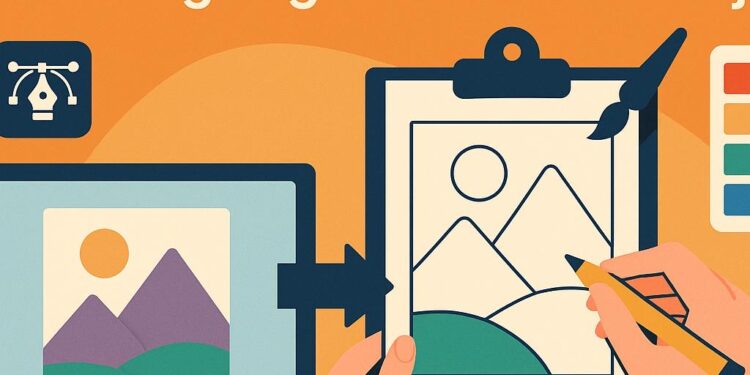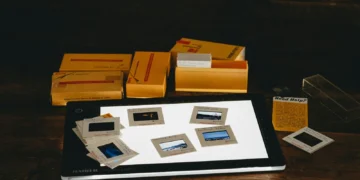In the ever-evolving world of design, innovation often lies in the ability to see familiar things in new ways. Whether you’re a graphic designer, illustrator, brand creative, or visual storyteller, one exciting trend that’s emerging at the intersection of art, interactivity, and nostalgia is the ability to turn image into coloring page.
This isn’t just a fun trick for kids — it’s a powerful creative approach that opens new doors for engagement, customization, and storytelling across multiple industries. From branding and packaging to client gifts and educational materials, designers are now transforming photos, illustrations, and digital compositions into line-art masterpieces for coloring — by hand or digitally.
Let’s explore how this concept works, how it’s being used professionally, and why you might want to add it to your creative toolkit.
Why Convert Images into Coloring Pages?
Coloring pages aren’t new — but personalized, design-driven coloring content? That’s a game-changer.
Here’s what makes this technique worth exploring:
- Interactive Design: Coloring pages invite users to engage directly with your art.
- Emotional Value: When a client or user sees a personalized image in a coloring format, it evokes play, nostalgia, and connection.
- Custom Merchandise: Turning client photos or brand assets into printable coloring books creates one-of-a-kind gifts or promo materials.
- Expanding Deliverables: As a freelance designer or agency, offering custom coloring pages adds a unique, on-trend service to your portfolio.
How to Turn Image into Coloring Page: The Smart Way
You could painstakingly trace outlines in Illustrator or Procreate, but now there’s a better way — thanks to AI-powered tools.
Platforms like Mimi Panda’s online converter allow you to upload any image and automatically generate a printable, clean-line black-and-white outline. Here’s how:
- Upload Your Image – Choose a photo, logo, or digital art piece.
- Let the AI Process It – The tool identifies contours and simplifies details to extract line work.
- Download the Coloring Page – Ready to print, share, or digitize.
The result? A design asset that’s ready for personal or commercial use — in seconds, with no need for manual vector tracing.
Creative Use Cases for Designers
Let’s look at some real-world scenarios where turning an image into a coloring page can elevate your work:
1. Branding & Merchandise
Imagine sending out a branded coloring book with your client’s product as the star — a playful way to engage customers or promote at trade shows. This works beautifully for:
- Children’s brands
- Wellness or mental health startups
- Food or lifestyle companies with a visual identity
2. Wedding & Event Design
Turn engagement photos or wedding portraits into guest favors — coloring postcards or pages that double as keepsakes. Add hand-lettered names, custom illustrations, and brand-style elements.
3. Portfolio Development
Show off your illustration skills by offering free downloadable coloring pages featuring your original characters, patterns, or travel photography — with your logo or handle subtly included.
4. Creative Campaigns
Use coloring pages to add interactivity to marketing materials. Campaigns that ask users to “color and share” their version of your design can go viral — and generate user-generated content at the same time.
Tips for Designers Creating the Best Coloring Pages
If you’re looking to incorporate this trend professionally, here are a few design-focused tips:
- Choose High-Contrast Images: Clear lines and defined shapes produce better coloring results.
- Simplify Busy Backgrounds: If you’re starting from a photo, crop or blur unnecessary details before converting.
- Leave Space for Creativity: Don’t overcrowd the page. Leave white space for users to add their own touches.
- Use Vector Editing Post-Conversion: Tools like Illustrator can help you refine or scale your coloring page for different media.
The Design Value of Interactivity
In a market flooded with content, interactive design helps brands stand out. Coloring pages make your visuals tactile — something that can be held, touched, and brought to life by the end-user. That’s emotional design at its best.
It’s not just about drawing inside the lines — it’s about inviting someone into your creative world. Whether it’s a kid, a customer, or a collector, this experience of collaborative creation builds stronger connections to your work.
Try It Today: Add a Twist to Your Next Project
Curious to try it yourself? Head over to Mimi Panda’s easy-to-use tool to upload one of your designs, a photo, or even a brand asset and turn it into a coloring page. Within seconds, you’ll have a coloring page you can share with clients, use for marketing, or just enjoy for yourself.
So next time you’re working on a design project, ask yourself: Could this be something worth coloring?
Conclusion: Design for Play, Create for People
At its heart, design is about communication. And what better way to connect than through play, personalization, and creativity? The ability to turn image into coloring page offers a refreshing way to make your work interactive, memorable, and emotionally engaging.
Whether you’re an illustrator, UX designer, or branding expert — don’t overlook this fun and functional way to bring your visuals to life. Sometimes, the simplest designs are the ones people remember most.







